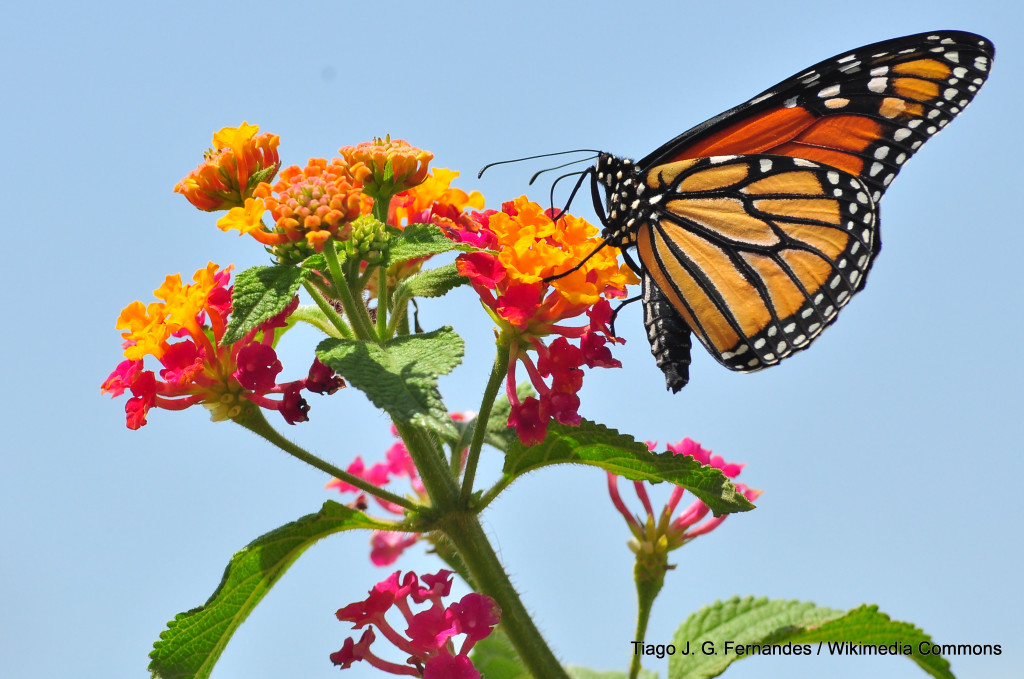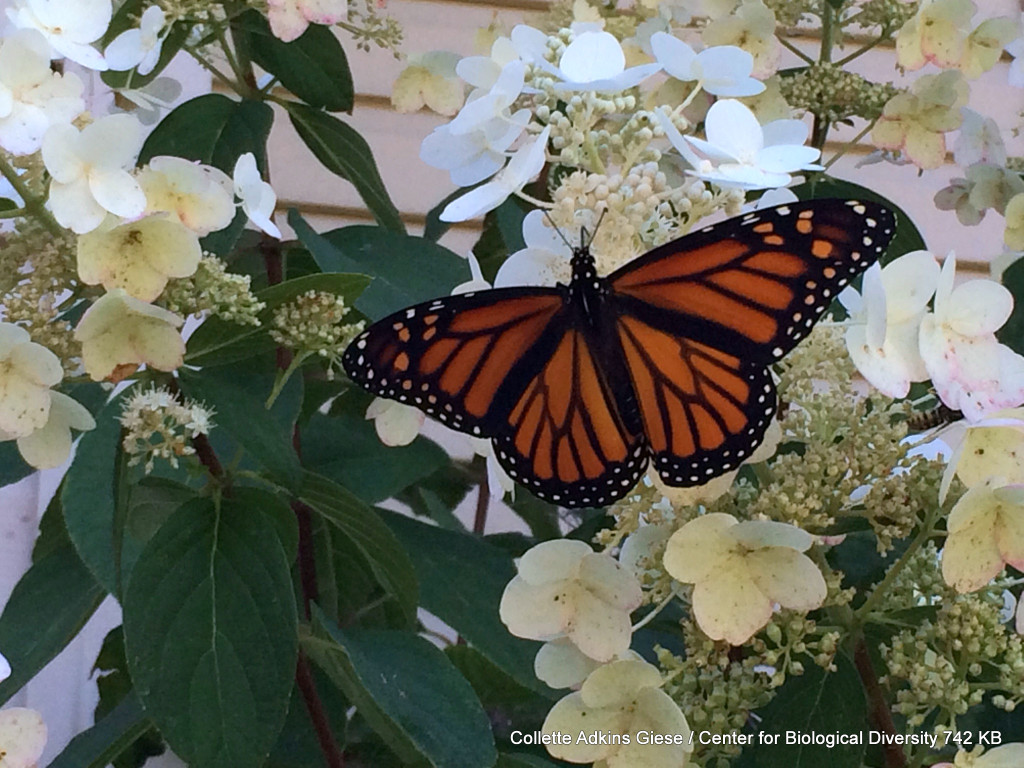Like summer’s fog vanishing during morning’s sun, Monarch Butterflies disappear daily. At some mark in time—just like fog—meadows, fields, and skies will be clear of them.
No time remains on nature’s clock to pussyfoot. Merriam-Webster defines that word as refraining from commitment, moving warily, waffling, weaseling, hedging . . . stop it already. Enable the benefits of the Endangered Species Act (ESA) now. Study why later.
ESA works! In its four decades since enactment, the law prevented 99 percent of protected species from ending their earthly reign due to extinction. Without its power, though, 99 percent of unprotected, endangered species like Monarchs continue their plight toward extinction. That is the overwhelming challenge.
Cuddle to the Monarch muddle: the species travels its yearly life-journey to Mexico and crosses back to North America but in ever-increasing, declining numbers. No question remains of that. The Center of Biological Diversity’s senior scientist, Tierra Curry, confirms this tragic occurrence in the January 7, 2015, USA Today online article “Monarch Butterfly gets Endangered Species Look.” Curry tells writer James Bruggers, “Everyone has been aware of how small the population is. A couple of bad storms could really send the population into an irreversible decline.” Ding-ding-ding, do you hear the alarm bell ringing? We are that close to precipice’s edge for losing the Monarch Butterfly forever. Just a couple of bad storms can decimate the Monarch’s existence? We experience those storms weekly now; check the news.
During the recent December holidays the U.S. Fish and Wildlife Service (USFWS) announced a gift for the Monarch. The first step for an endangered listing, a status review required for ESA, is underway. Praise goes to the Center for Biological Diversity, the Center for Food Safety, The Xerces Society for Invertebrate Conservation , SaveOurMonarchs.Org and famed Monarch butterfly entomologist, Dr. Lincoln Brower, for having the wherewithal to present data to the Service confirming what most know: Monarch populations are disappearing faster than a David Copperfield illusion.
Defenders of Wildlife, “a national, nonprofit membership organization dedicated to the protection of all native animals and plants in their natural communities,” published the insightful article, “The Endangered Species Act: Just the Facts” February, 2013. Their analysis:
The loss of a species can disrupt important ecosystem functions, producing adverse effects that may not become apparent for decades. By protecting the places where
endangered species live, we are also protecting ecosystems that provide us with clean water and abundant natural resources. Each plant or animal is an integral thread in the web of life that helps pollinate our food crops, prevent erosion, purify water, store carbon, protect us from storm surges and provide countless other “ecosystem
services” that greatly benefit people . . . We need the provisions of the ESA more today than ever before.
The process of protection for the Monarch begins with the USFWS’ status review step. Importantly, the study seeks outside information confirming what is clear: the Monarch population continues a steep decline. However, the bureaucratic process takes time. In their document on the act, the USFWS makes clear the path for protection follows “a strict legal process known as a rule making (or regulatory) procedure.” Translated, that means a long time and miles of difficult red tape.
The US Food and Drug Administration (FDA) uses a fast track designation and priority review for important cures and drugs pushed through the process for earlier for human care and healing. The ESA uses an internal “priority system” guiding their efforts’ direction. That is a start, but the agency needs such an amendment for fast track or expedited review; why not name it the Monarch Mandate? The time required to earn the endangered label may easily stretch to 18 months.
The argument goes this way: the budget of the USFWS leaves only so much room for the many needy species. Therefore, only so many can be chosen for ESA designation. Right, and mankind will never land on the moon. These challenges call for a fix. Find room for creativity in modern bureaucracy for streamlining unnecessary steps and oversight. Allow designated nonprofits more room and authority in reporting and policing efforts for an endangered species. Maintain oversight control at the Service level while reducing their own workload.
Monarchs—along with other species in danger of extinction—may not have the time for an extended tour of review. Eliminate the competition for selection to the endangered list. This isn’t a sport.
The USFWS deserves kudos for their accurate estimates of time required for a species to recover. Most tally over a quarter-of-a-century, but many are double that. Saving the Monarch is not an overnight fix. But a fix indeed needs to occur. Now, not later.
Entertainer Elton John sang Bernie Taupin’s lyrics in 1975’s hit record “Someone Saved My Life Tonight.” Embedded in that song rests this reference relevant to the Monarch:
Sweet freedom whispered in my ear / You’re a butterfly
And butterflies are free to fly
Fly away, high away . . . bye bye
Either we watched the Monarchs fly away, never to return (“bye bye”), or we repair their circumstance so their flight away to the South is not permanent. Rather make their journey one from which they will return in ever-increasing numbers. “Bye, bye, see you soon when you get back,” commands a better and rewarding send off. The choice is ours.
FACEBOOK: Save Our Monarchs Foundation
WEBSITE: Save Our Monarchs.Org






Leave a Comment